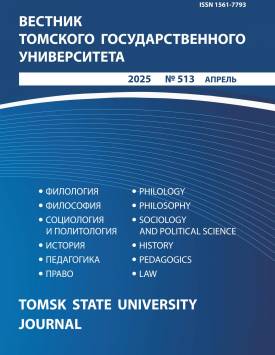Analysis of physical fitness monitoring in preschoolers for the period from 2013 to 2022
Modern preschoolers face the problem of hypokinesia and physical inactivity, aggravated by neuropsychiatric overloads, which negatively affects their performance and cognitive functions. To optimize children's motor activity, regular monitoring of physical fitness is required, which will make it possible to adjust and adapt educational programs and develop effective methods of physical education. The aim of the study was to assess the level of motor fitness of children aged 5-6 years based on ten years of monitoring their physical development. The results of pedagogical testing as part of the annual monitoring of physical fitness of preschoolers were analyzed. The results of the physical fitness monitoring from 2012 to 2022 of children aged 5-6 years, pupils of Preschool No. 4 Montessori in Tomsk, were analyzed. The results of the study are presented for the period of the completion of the pre-school educational program, presented for a separate academic year, i.e. at the end of the academic year. The section "Physical Development" of the preschool educational program did not have significant changes and additions during the study period. 104 children participated in the study (annually); this number of children did not change from year to year due to the established quota of the educational institution, but the gender composition of the children changed slightly. The analysis of the results of the pedagogical testing over the past ten years makes it possible to identify both positive and negative trends in the children's physical development. Positive changes were noted in tests aimed at assessing the speed and strength fitness of the muscles of the lower extremities (long jump from a standing position, squats in 30 seconds, high jump). However, a significant deterioration in performance was observed in tests evaluating strength and speed qualities (throwing a 1 kg ball, running 30 m) and agility (stuffing a basketball in 20 seconds, hitting a soccer ball into a goal from 5 m). The results of this study can be used to develop recommendations for increasing children's physical activity and improving their health, as well as to create more effective physical education programs that take into account children's individual characteristics and needs. The author declares no conflicts of interests.
Keywords
physical fitness, preschoolers, monitoring of physical developmentAuthors
| Name | Organization | |
| Sosunovsky Vadim S. | National Research Tomsk State University | vadim14sergeevich@gmail.com |
References

Analysis of physical fitness monitoring in preschoolers for the period from 2013 to 2022 | Vestnik Tomskogo gosudarstvennogo universiteta – Tomsk State University Journal. 2025. № 513. DOI: 10.17223/15617793/513/22
